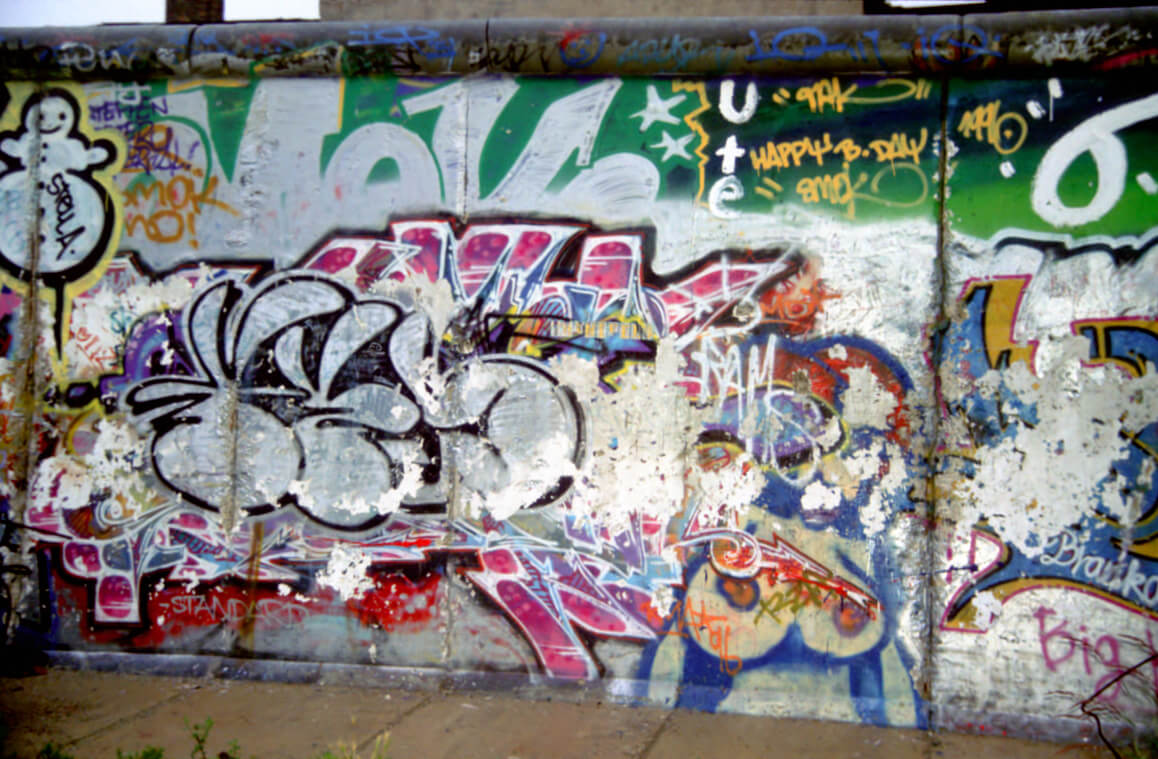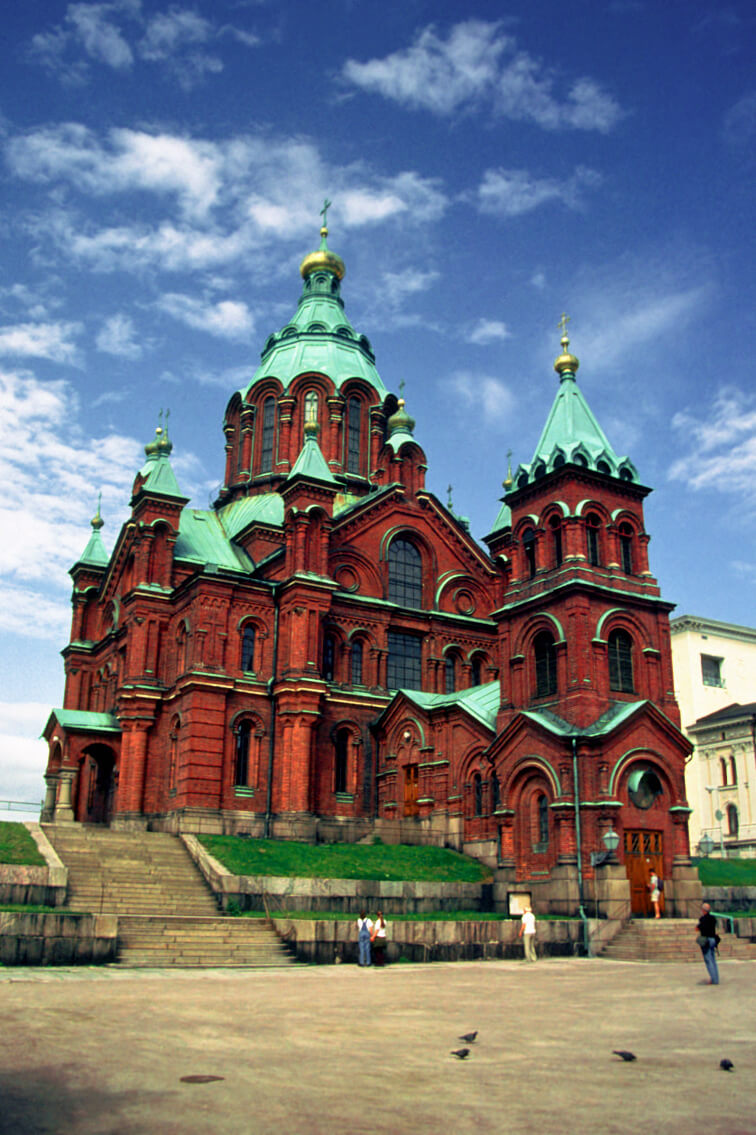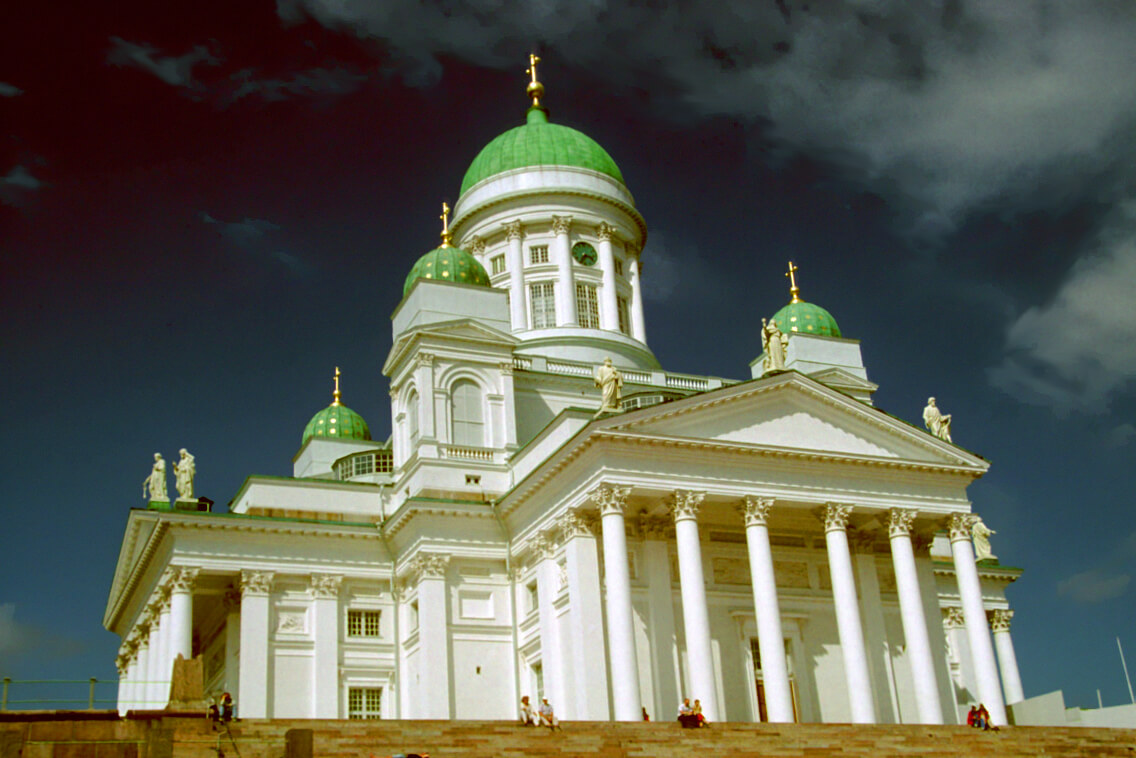Introduction
Europe by train is great. Especially with the interrail formula which allows to travel a whole month for a fixed price of CHF 250.- (in 1998). This adventure, shared with a student friend, started at the Basel station. First train to Berlin, then an idea to go to Scandinavia (Sweden, Finland) and to finish in Russia, country where the interrail is not valid, but where public transport is very cheap.
Berlin
Berlin, 9 years after the fall of the wall, has changed a lot, but remains well impregnated with the communist regime. A few pieces of walls here and there. Old “Trabant” cars all colored dating in my eyes of a revoked time. Berlin is a city under construction and in permanent renovation.
Potsdam
Potsdam is a suburb of Berlin, located 30 minutes by train from Berlin. It is especially the place where the Sanssouci Palace was built, the summer residence of the Prussian king, “Frederick the Great”. After the Second World War it became an attraction open to the public.
Danemark
Denmark is a country whose main area is as big as Switzerland, about 42’924 km2. But Denmark has other islands, such as the Faroe Islands and Greenland. In all, the kingdom of Denmark covers an area of more than 2’210’579 km2. As an obligatory passage to Sweden, Denmark is a complex of islands, the main ones of which have been linked by magnificent bridges.
Gording
Gording is the first town where the train stops after crossing the German border. First stop and first youth hostel.
Copenhagen
Capital of Denmark, located on the largest island of the archipelago, Seeland. Copenhagen is especially known for its small-siren and its colorful buildings.
Sweden
Sweden is about ten times the size of Switzerland, yet only 1.5% of its area is inhabited. 87% of the inhabitants live in large cities.
Lund
Lund is a small town, located above Malmö. Lund has an old train converted into a youth hostel.
Ales Stenar
Ales Stenar is located at the southernmost point of Sweden. It is an ancient megalithic site, like Stonehenge in England.
Stockholm
Capital of Sweden, Stockholm is 4 hours by train from Lund. Stockholm has more than 2 million inhabitants (in 1998).
Finlande
To reach Finland from Stockholm, nothing better than the ferry. The journey between Stockholm and Turku takes all night.
Helsinki
Helsinki is the capital of Finland. Located in the Gulf of Finland, which it shares with Tallinn, to the south, and St. Petersburg, to the east, Helsinki enjoys a temperate climate, compared to the rest of the country. It has a population of 600’000 inhabitants (in 1998).
Russia
Russia is the largest country in the world. It is made up of three quarters of the Asian continent and a quarter of the European continent. It represents alone, more than 11% of the world’s land. Russia was born from the breakup of the Soviet Union in 1991.
Some very special memories
When we come from Switzerland or Europe, we are used to everything being clean and functional. But in Russia, things are very different.
Moscow
The best way to reach Moscow is by night train from Helsinki. Moscow is the capital of Russia. It has 11 million inhabitants (in 1998). It is the most populated city in Russia and in the whole Europe.
St-Petersbourg
St. Petersburg is the second largest city in Russia. It has almost 5 million inhabitants (in 1998). It was founded in 1703 by Peter the Great. The city is divided in two by the Neva River. It was the capital of the Russian Empire until 1917. The hermitage museum is one of its main assets.





















































